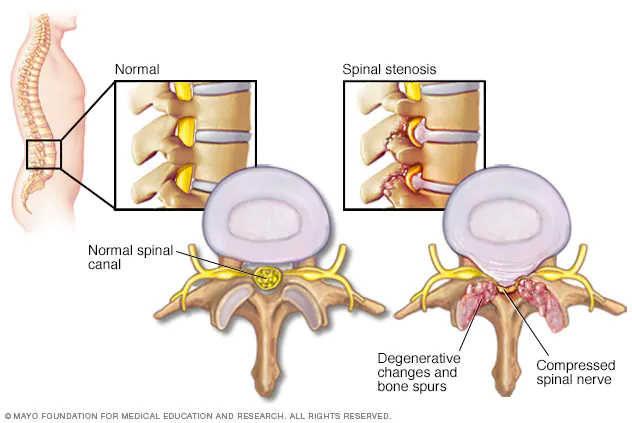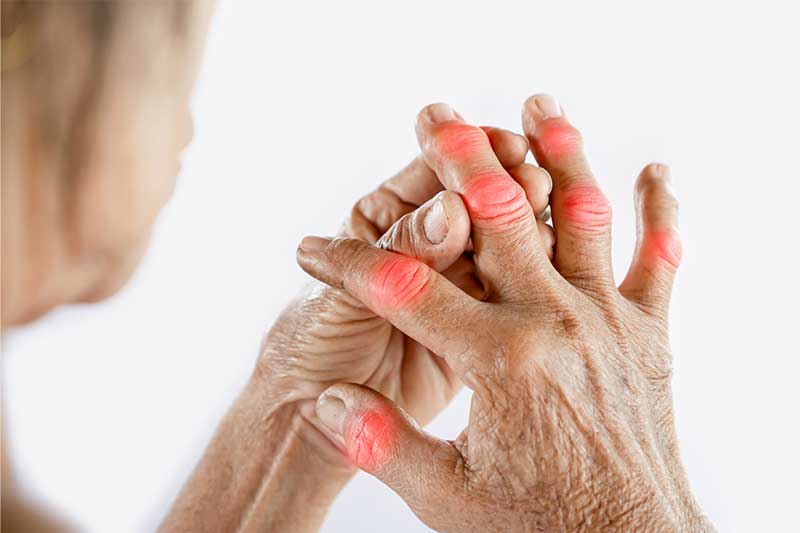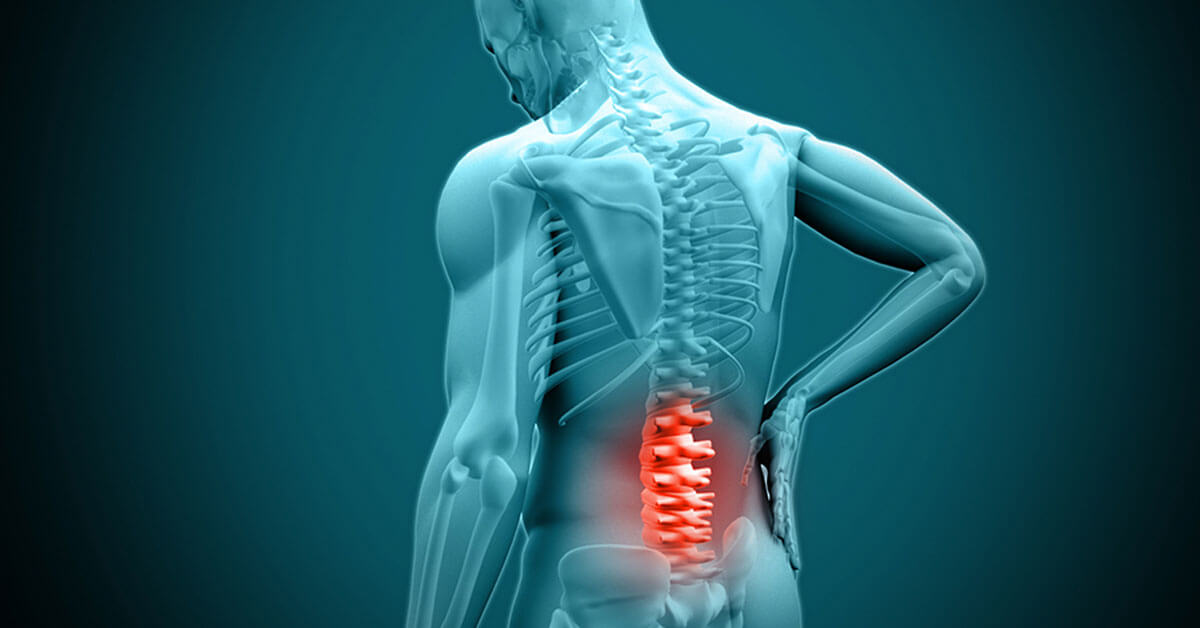Spinal stenosis is a narrowing of the spaces within your spine, which can put pressure on the nerves that travel through the spine. Spinal stenosis occurs most often in the lower back and the neck.
Some people with spinal stenosis may not have symptoms. Others may experience pain, tingling, numbness and muscle weakness. Symptoms can worsen over time.
Spinal stenosis is most commonly caused by wear-and-tear changes in the spine related to osteoarthritis. In severe cases of spinal stenosis, doctors may recommend surgery to create additional space for the spinal cord or nerves.

Types of spinal stenosis
The types of spinal stenosis are classified according to where on the spine the condition occurs. It’s possible to have more than one type. The two main types of spinal stenosis are:
- Cervical stenosis. In this condition, the narrowing occurs in the part of the spine in your neck.
- Lumbar stenosis. In this condition, the narrowing occurs in the part of the spine in your lower back. It’s the most common form of spinal stenosis.
The symptoms of spinal stenosis typically progress over time, as nerves become more compressed.
If you have spinal stenosis, you might experience:
- leg or arm weakness
- lower back pain while standing or walking
- numbness in your legs or buttocks
- balance problems
Sitting in a chair usually helps relieve these symptoms. However, the symptoms may return during periods of standing or walking.

The most common cause of spinal stenosis is aging. As you age, tissues in your spine may start to thicken, and bones may get bigger, compressing the nerves.
Certain health conditions may also contribute to spinal stenosis, including:
- Achondroplasia. This inherited condition interferes with bone formation in the spine, as well as other parts of the body.
- Ankylosing spondylitis. This is a type of arthritis that causes chronic inflammation in the spine, which can lead to the growth of bone spurs.
- Congenital spinal stenosis. This is a birth defect in which the spinal canal is naturally narrow.
- Ossification of the posterior longitudinal ligament (OPLL). In this condition, calcium deposits form on the ligament that runs through the spinal canal.
- Osteoarthritis. In this type of arthritis, the cartilage that cushions joints breaks down. It can affect the cartilage between vertebrae and may also cause bone spurs to grow in the spine.
- Paget’s disease of the bone. This chronic condition causes bones to get weaker and grow larger than usual.
- Rheumatoid arthritis. This type of arthritis involves chronic inflammation, which can cause bone damage and bone spurs to develop.
- Scoliosis. This abnormal curving of the spine may result from certain genetic conditions, neurological abnormalities, or unknown causes.
- Spinal injuries. Slipped discs or bone fractures may cause vertebrae or bone fragments to put pressure on nerves in the spine.
- Spinal tumors. These abnormal tissue growths may develop in the spinal canal, trigger inflammation, and cause changes in the surrounding bone.




